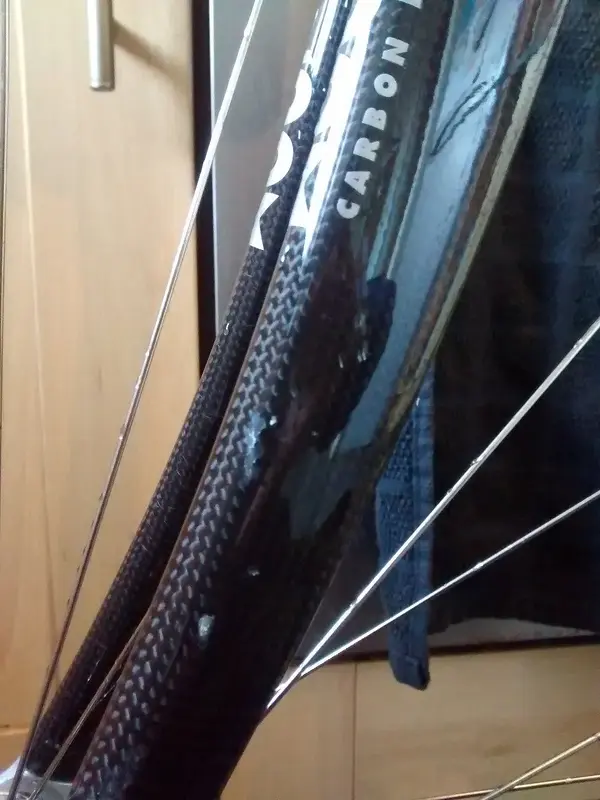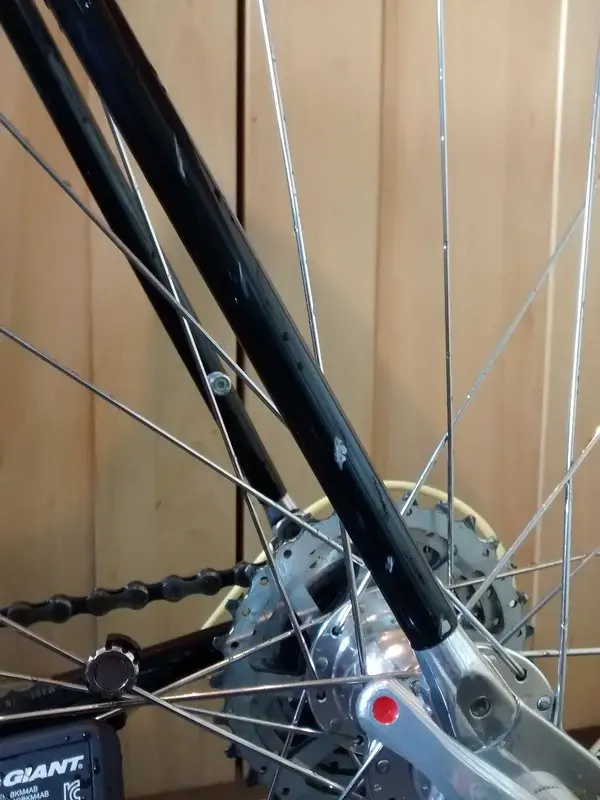Thanks for photos ,can’t tell but on the fork is the carbon ok beneath the lacquer chip ? ,on those two chips it’s absolutely not worth buying 2K/two pack materials ,only last week I bought lacquer and smallest tin was 500ml which is enough to spray a car,best solution would be buying cheapest aerosols in clear and black and a small touch in brush and build up the two chips before blending in level with original finish ,you need to flick off any loose paint first with a blade ,then mask within a few mm of the chips then ‘key ‘ up with 500 wet and dry [used to be able to buy single sheets from Halfords or carbody suppliers],demask ,wipe clean with acetone then allow to dry ,remask ,then v v patiently ‘build’ up the chips with drops of paint allowing it to dry off almost completely between coats [rattle can relys on solvent evaporation for drying,so it’s worth squirting some of the paint into the aerosol lid and leaving for 10min so some of the solvent ‘off gasses’and paint thickens a bit,obviously use a mask when spraying and in well ventilated area and maybe disposable gloves when squirting ],rattlecan paint ‘shrinks’ hugely on full drying so any building up needs to be the height of the masking tape at a minimum,then demask and allow to fully dry for a day or so then ‘sand’ level with 500 to start[if we’ll above level of original] and 1000-1500 to level off/finish using a little flat piece of wood or somesuch to wrap bits of wet/dry around using soapy water as lubricant,then buff back up with t-cut.Would my technique change much if using 2K materials?,no but it would build up better and dry harder and I’d prob polish up with my polisher and polishing compound,the latter is v v similar to t-cut ,it’s very important to flick off any loose paint first ,the ‘whitish/opaque’ look of the chip on the fork is absolutely typical of lacquer that has debonded .sorry for essay ,I could demo technique in about 2min

